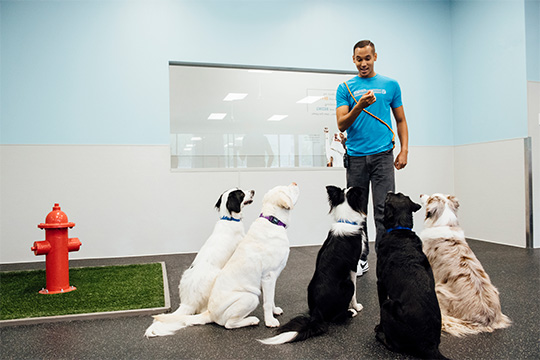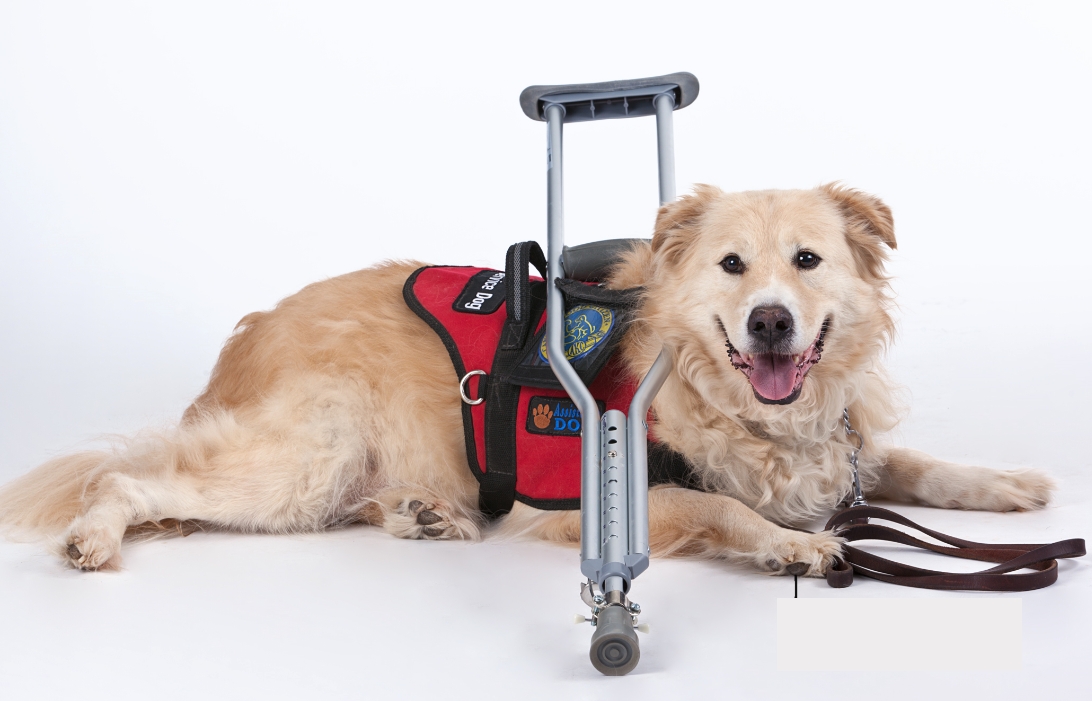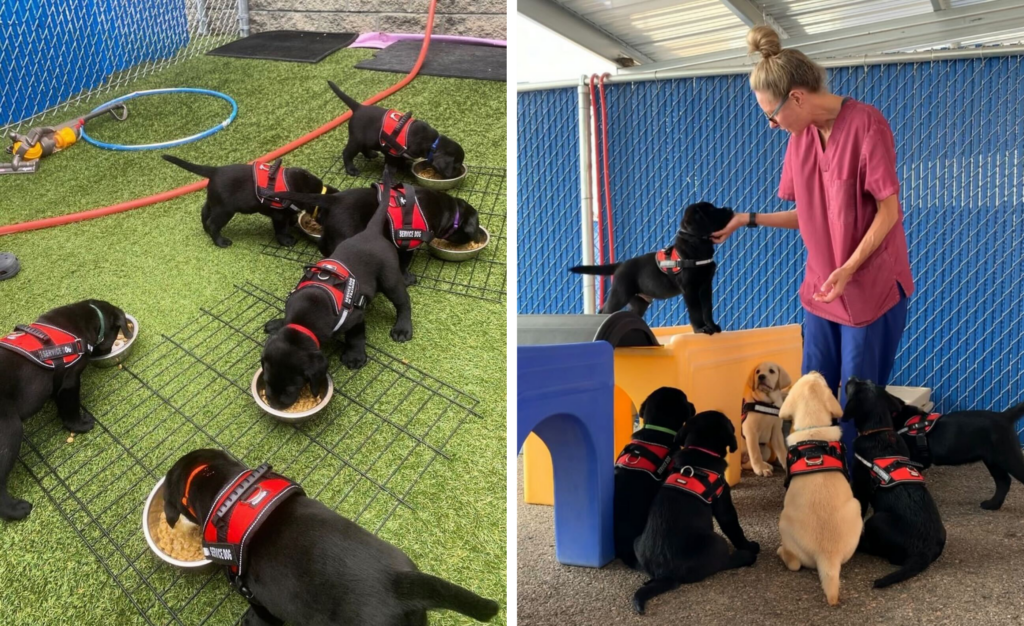Puppy Training That Teaches Key Skills for Lifelong Good Behavior
Puppy Training That Teaches Key Skills for Lifelong Good Behavior
Blog Article
Beginner's Guide to Effective Pet Dog Training in the house
Successfully training a pet dog at home needs a nuanced understanding of canine habits and effective interaction techniques. Developing clear training objectives, using premium rewards, and preserving uniformity across family participants are crucial aspects. Integrating training into day-to-day regimens can enhance both involvement and retention.
Understanding Canine Habits
Recognizing canine habits is crucial for effective training and promoting an unified partnership between people and their canine buddies - Puppy Training. Canines interact primarily via body language, vocalizations, and faces, making it important for owners to interpret these signals accurately. Recognizing habits such as tail wagging, growling, or trembling can supply understandings right into a dog's mood and objectives
Moreover, understanding the natural reactions of canines, such as their pack way of thinking, helps owners establish leadership roles within the home. This is crucial for creating an organized setting where canines really feel safe and are extra responsive to training. Pets are additionally affected by their socializing experiences; very early direct exposure to different environments, people, and various other pets can dramatically shape their habits later in life.
Common behavior concerns, such as hostility, stress and anxiety, or excessive barking, usually originate from misunderstandings or unmet demands. Observing and attending to these concerns promptly can prevent rise and make certain a favorable training experience. By promoting a deep understanding of canine behavior, proprietors can tailor their training methods to suit their canine friends, inevitably causing a contented and mannerly family pet.

Necessary Training Tools
A well-appointed training area can dramatically improve the performance of dog training in your home. Necessary training tools make certain that both the pet dog and the trainer can take part in efficient sessions that cultivate understanding and bonding.

Spending in a strong leash and a comfortable, well-fitting collar or harness is important for security and control. These tools help establish boundaries and ensure the dog continues to be secure throughout training. In addition, a marked training location, cost-free from disturbances, help focus for both the instructor and the canine.
Training aids such as training pads, cones, or agility equipment can also enhance the experience by introducing range and obstacles. Last but not least, having a note pad or electronic app for tracking development can be very useful, enabling you to keep in mind successes and locations for improvement. Making use of these necessary devices will develop a positive training environment and lay the foundation for effective understanding.
Producing a Training Regimen
Establishing a regular training routine is essential for efficient canine training in the house. A well-structured routine not just assists in enhancing preferred actions however additionally offers your pet with a complacency and predictability. To produce an effective training routine, begin by identifying certain training goals, such as fundamental commands, chain walking, or house-training.
Choose an assigned time daily for training sessions, ideally when your pet dog is receptive and sharp. Procedure ought to be brief, approximately 5 to 15 minutes, to keep emphasis and avoid exhaustion. Uniformity in timing and environment will boost your pet's knowing experience.
Integrate training right into go to this website everyday tasks to reinforce abilities. For instance, technique commands throughout walks or mealtime, which incorporates learning into natural routines. In addition, continue to be flexible and adjust the routine as required, fitting your pet dog's power degrees and state of mind.
Favorable Support Strategies

When implementing favorable reinforcement, it is important to select rewards that are inspiring for your canine. High-value deals with, such learn this here now as tiny items of hen or cheese, can be especially reliable during training sessions. In addition, varying the benefits can keep your canine's passion and enthusiasm.
Begin with straightforward commands, like "sit" or "stay," and progressively progress to much more complicated tasks. Consistency is crucial; ensure that all member of the family make use of the same commands and benefit systems to stay clear of complication.
Moreover, it is important to continue to be patient and avoid stress. Dogs, like people, discover at their very own speed. By cultivating a supportive training environment with positive reinforcement, you can improve your pet's understanding experience while strengthening the bond between you and your fuzzy buddy, preparing for effective training end results.
Common Training Difficulties
While educating a pet in the house can be a rewarding experience, it typically features a collection of usual challenges that can check both persistence and consistency. One prevalent issue is diversion. Pet dogs may end up being easily sidetracked by noises, activities, or also aromas in their setting, making it tough to preserve their focus throughout training sessions.
An additional obstacle is inconsistency in commands and reinforcement. It can impede and confuse the pet dog development if household members use various cues or incentives. Establishing a unified method is necessary for efficient communication.
Additionally, dogs can experience aggravation or anxiety, especially if they do not understand what is anticipated of them. This can Dog training result in undesirable behaviors, such as barking or eating.
Lastly, the timing of reinforcement is critical. Postponed incentives can diminish the effectiveness of favorable support, as pet dogs might fail to attach the actions with the incentive.
Overcoming these obstacles requires commitment, clear interaction, and a structured training strategy - Puppy Training. Identifying and addressing these typical barriers will pave the method for an extra successful and delightful training experience in your home
Verdict
To conclude, successful pet dog training in the house demands a thorough understanding of canine behavior and effective interaction approaches. By developing clear training objectives and utilizing premium deals with along with favorable reinforcement, the training process becomes more rewarding for both the dog and the fitness instructor. Consistency, flexibility, and patience are crucial elements that facilitate discovering. Eventually, integrating training into daily regimens enhances the bond between dog and proprietor, making the experience both pleasurable and effective.
Developing a constant training regimen is necessary for effective pet dog training at home.Positive support techniques are basic to effective pet training, promoting wanted habits through incentives rather than punishment. By cultivating a supportive training atmosphere through positive support, you can enhance your pet dog's discovering experience while strengthening the bond in between you and your furry buddy, laying the groundwork for effective training end results.
In final thought, successful pet dog training at home demands a thorough understanding of canine behavior and efficient interaction strategies. By establishing clear training objectives and utilizing top notch treats alongside positive support, the training procedure becomes a lot more rewarding for both the trainer and the canine.
Report this page